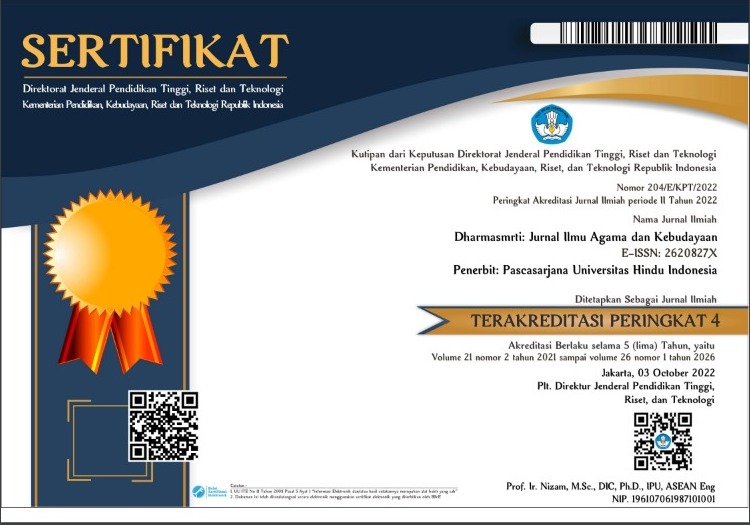STRUKTUR, NILAI PENDIDIKAN KARAKTER HINDU DAN TANGGAPAN ANAK NYASTRA TENTANG SANTI PARWA
Abstract
Santi parwa is the twelfth of the Mahabharata series. It has its own specialties compared with the other parwas. It implies how a leader should take actions. The leader should not only give priority to his personal feelings, but must concern what his people necessarily need. The leader has to show how the actions should be taken so that they conform to the values of the Hindu character education to reach the ultimate goal, santi (peace). The structure of the Santi Parwa story is in the form of the clas- sical Hindu literature, the structure of the Santi Parwa story consists of two parts: the extrinsic struc- ture and the intrinsic structure. The value of the character education found, among the eighteen char- acters, are five characters contained: religious, honest, friendly/ communicative, peace loving, and responsibility. The response from the anak nyastra states that Santi Parwa has the function of educa- tion, culture, religion, and entertainment.















